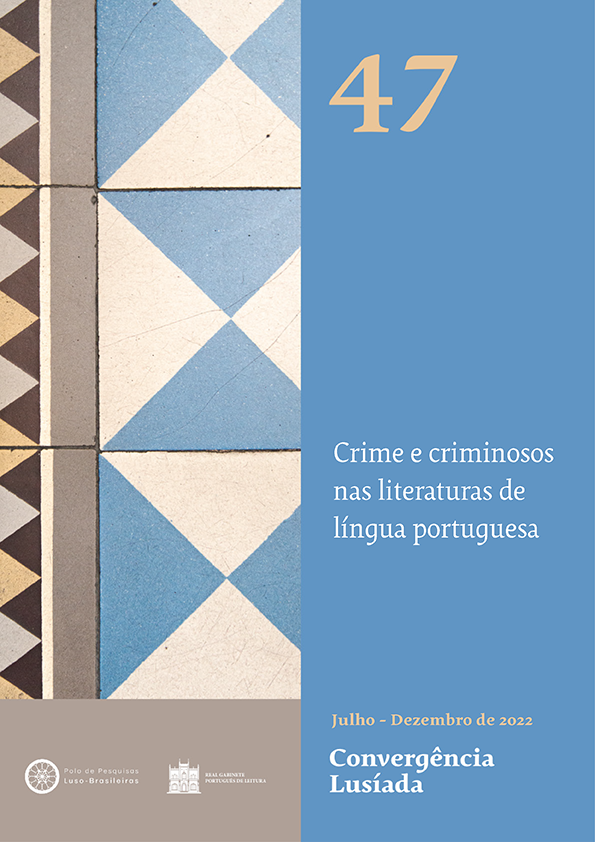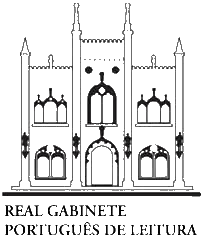Two modes of narrating the criminal child in twentieth-century Brazilian literature: Jorge Amado and Murilo Rubião
DOI:
https://doi.org/10.37508/rcl.2022.n47a478Keywords:
Gothic, narrator, Jorge Amado, Murilo Rubião, childrenAbstract
Based on critical works such as those by Steven Bruhm (2006) and Robin Wood, this article reflects on the relations between childhood and crime in twentieth-century pieces that are tributary of negative poetic traditions. Our starting point was the hypothesis that there are two preponderant narrative modes: (i) denouncing narrators, who draw attention to child monstrosity as a consequence of social issues; and (ii) impassive narrators, who, by not offering explicit justifications for child criminality, tend to present it as inherent and insolvable. To illustrate these premises, we turned to the novel Capitães da Areia (1937), by Jorge Amado, and to the short story “A Casa do Girassol Vermelho” (1947), by Murilo Rubião.
Downloads
References
AMADO, Jorge. Capitães da Areia. São Paulo: Companhia das Letras, 2009.
BASTOS, Alcmeno. Murilo Rubião e a questão da causalidade. In: BATALHA, Maria Cristina; GARCÍA, Flavio (org.). Murilo Rubião 20 anos depois de sua morte. Rio de Janeiro: EdUERJ, 2013. p. 67-82.
BLOOM, Paul. O que nos faz bons ou maus. Tradução de Eduardo Rieche. Rio de Janeiro: Best Seller, 2014.
BRUHM, Steven. Nightmare on Sesame Street: or, the Self-Possessed Child. Gothic Studies, Edinburgh, v. 8, n. 2, p. 98-113, nov. 2006. DOI: https://doi.org/10.7227/GS.8.2.7
DOSSE, François. A saga dos intelectuais franceses, v.1; à prova da história (1944-1968). Tradução de Guilherme João de Freitas Teixeira. São Paulo: Estação Liberdade, 2021.
GEORGIEVA, Margarita. The Gothic Child. London: Palmgrave Macmillan, 2013. DOI: https://doi.org/10.1057/9781137306074
GREGORY, Kristen. Exceptional and Destructive: The Dangerous Child and the Atom Bomb in Postwar Science Fiction. In: _____. FLEGEL, Monica; PARKES, Christopher (org). Cruel Children in Popular Texts and Cultures. Cham: Palgrave Macmillan, 2018. p. 153-168. DOI: https://doi.org/10.1007/978-3-319-72275-7_8
JOSIOWICZ, Alejandra J. La cruzada de los niños: intelectuales, infancia y modernidad literaria en América Latina. Bernal: Universidade Nacional de Quilmes, 2018.
JUDT, Tony. O mal ronda a terra: um tratado sobre as insatisfações do presente. Tradução de Celso Nogueira. Rio de Janeiro: Objetiva, 2011.
KOLBUSZWESKA, Zofia. The Purloined Child: American Identity and Representations of Childhood in American Literature (1851-2000). Lublin: Wydawnictwo KUL, 2007.
MURPHY, Bernice M. Horror Fiction from the Decline of Universal Horror to the Rise of the Psycho Killer. In: ALDANA REYES, Xavier (ed.). Horror: a literary history. London: British Library, 2016. p. 131-158.
OATES, Joyce Carol. Killer Kids. The New York Review of Books, November 6, 1997, s.p. Disponível em: <https://www.nybooks.com/articles/1997/11/06/ killer-kids/> Acesso em 12 de agosto de 2021.
PUNTER, David. Technogenealogies: Family Secrets. In: _____. The Gothic Condition: Terror, History and the Psyche. Wales: Wales University Press, 2016. p. 87-94.
RUBIÃO, Murilo. A Casa do Girassol Vermelho. In: _____. Contos reunidos. São Paulo: Editora Ática, 2005. p. 15-24.
SARTRE, Jean-Paul. Que é a literatura? Tradução de Carlos Felipe Moisés. São Paulo: Editora Ática, 2004.
WEINSTOCK, Jeffrey Andrew. Invisible Monsters: Vision, Horror, and Contemporary Culture. In: _____. (org.). Monster Theory Reader. London: University of Minnesota Press, 2020. p. 358-373. DOI: https://doi.org/10.5749/j.ctvtv937f.22
WOOD, Robin. An Introduction to the American Horror Film. In: WEINSTOCK, Jeffrey Andrew (org.). Monster Theory Reader. London: University of Minnesota Press, 2020. p. 108-135. DOI: https://doi.org/10.5749/j.ctvtv937f.9
Downloads
Published
How to Cite
Issue
Section
License
Authors who publish in Convergência Lusíada agree with the following terms:
- Authors retain copyright and grant the journal right of first publication with the work simultaneously licensed under a Creative Commons Attribution-NonCommercial 4.0 International License (CC-BY-NC 4.0) that allows others to share the work with an acknowledgment of the work's authorship and initial publication in this journal.
- Authors may enter into separate, additional contractual arrangements for the non-exclusive distribution of the journal’s published version of the work (e.g., post it to an institutional repository or publish it in a book), with an acknowledgment of its initial publication in this journal.
- Authors are permitted and encouraged to post their work online (e.g., in institutional repositories or on their website) prior to and during the submission process, as it can lead to productive exchanges, as well as earlier and greater citation of published work.

Revista Convergência Lusíada is licensed under a Creative Commons - Atribuição-NãoComercial 4.0 Internacional.









